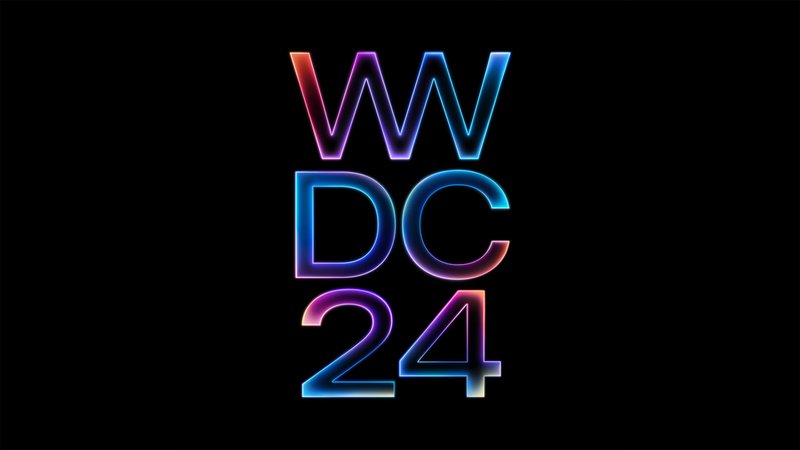StoreKit 1 deprecation and what else is new for subscription apps at WWDC 2024
What's new for subscription apps from this year's WWDC.

WWDC 2024 has just wrapped up and there is some big news for subscription apps! We’ve been poring through session videos and talking to developers on the ground in Cupertino to figure out what Apple has changed this year for subscription app businesses on the App Store.
In this blog, I’ll summarize all of the highlights — if you prefer, you can watch us discuss these in our WWDC recap.
StoreKit 1 is deprecated
Last year Apple deprecated the StoreKit 1 verifyReceipt endpoint, and this year they’re finishing the job and deprecating all of the original StoreKit 1 APIs (now renamed “original API for in-app purchase”). They’ll continue working for now, but this is Apple clearly telling developers it’s time to migrate over to StoreKit 2 APIs for everything going forward.
Win-back offers
This year Apple introduced a new offer type called win-back offers. This new offer type gives developers the option to re-engage churned subscribers with a discount or free trial.
In App Store Connect, developers can create a win-back offer in a very similar way to how Introductory Offers can be created today. The difference is that developers can configure requirements for which users are eligible for a particular win-back offer. Eligibility can be determined by the duration of their lapsed paid subscription, time since they were last subscribed, and the time since the last win-back offer was redeemed.
Win-back offers are visible to users in a few different places when a user is eligible to redeem the offer. On App Store product pages, offers are prominently displayed for eligible users. Apps can show win-back offers in app on-launch automatically. Offer links allow developers to distribute win-back offers to users through their own distribution channels, though it’s important to note that only eligible users will actually be able to redeem them.
Apple also mentioned that the App Store editorial team may feature app’s win-back offers across the App Store. It remains to be seen what this will look like, but this could possibly open up an interesting new channel to try to win back churned customers.
Another interesting element of win-back offers is that users can now complete a purchase of a product directly in the App Store without needing to open the app using streamlined purchasing. Developers have the option to opt-out of streamlined purchasing if they want to send users into the app to complete the purchase. Apps that opt-out will receive a PurchaseIntent on-launch to allow them to initiate the purchasing flow.
StoreKit views
StoreKit views were introduced last year to give developers a simple way to add basic paywalls in their subscription apps. This year they received a few notable improvements.
StoreKit views can now group products together to more clearly show different subscription tiers using the new SubscriptionOptionGroup API. This renders a much cleaner paywall showing one group at a time with the ability to switch tabs for the different tiers.
There are also new ways to customize your StoreKit view with new standard control styles including:
- Compact Picker
- Paged Picker
- Paged Prominent Picker
In addition to these new standard controls, developers can build their own custom control styles by utilizing the same primitive components of the standard styles.
App Store quality-of-life updates
App Store Connect introduced multiple quality-of-life improvements this year.
Reduced screenshot requirements
Generating screenshots for the App Store has always been a major source of pain for developers pushing updates of their apps. Now apps are only required to include one screenshot size per platform!
Featuring nominations
Developers will be able to notify App Store editorial about the specific dates of their upcoming launches of new apps or big updates. This could make it easier for developers to get their app featured on the App Store and promote the app during launches.
Market asset creation in App Store Connect
There’s a new tool in App Store Connect for quickly creating nice looking marketing images of your app for promotional purposes. If an app is featured on the App Store, Apple will send the developer a notification including a collection of marketing assets they can use to promote their App Store feature on social media.
This is a nice little touch that will be useful for smaller developers to quickly market their apps.
Deep links for custom product pages
Apps that have multiple custom product pages will now receive a deep link that specifies which custom page the user downloaded their app from on the first launch. This means that developers can show a custom onboarding flow that matches the custom product page they set up on the store.
TestFlight improvements
The TestFlight user experience for users installing an app is now much improved. The download page can now include screenshots and looks much more similar to the App Store to make it clear to users what app their installing is intended to do.
App Store search enhancements
There are numerous small improvements to App Store search this year. The search field will offer new personalized search suggestions and recent searches in a drop down to make the search experience more convenient for users.
App Store Analytics API
There’s a new set of richer, and anonymized, data available to 3rd party tools for displaying an app’s analytics. There are also hundreds of new metrics available to developers as part of Apple’s DMA compliance.
In-app purchase testing enhancements
Developers building in-app purchases in their app should definitely be using StoreKit configuration files for local testing. This year Apple added numerous enhancements to make them even better.
- Privacy policy and license configuration
- Subscription group display name localization
- Win-back offer configuration and eligibility toggling
- In-app purchase images for StoreKit view testing
- Disable system dialogs for easier UI automation testing
The transaction manager also received a few new updates. Developers can now send purchase intents into their apps directly from Xcode. Billing Issue messages can also be tested with the new billing retry option in the StoreKit configuration file.
AdAttributionKit
AdAttributionKit is Apple’s new ad attribution framework (SKAdNetwork 5.0 was absent) aimed at improving how advertisers measure campaign success while preserving user privacy. New features include:
- Broader compatibility: AdAttributionKit works with both the Apple App Store and emerging third-party app stores, providing more flexibility.
- Support for re-engagement campaigns: Advertisers can now track re-engagements, allowing them to target users who have previously installed the app with remarketing ads. A new
conversion-typefield supportsdownload,redownload, andre-engagementvalues, helping to evaluate the effectiveness of campaigns.
This framework builds on the fundamentals of SKAdNetwork and appears to be its successor.
📚 Read our more in-depth guide to AdAttributionKit.
Summary
While WWDC 2024 wasn’t a massive year for StoreKit changes, there were a number of small changes that will make developers’ lives a little easier and may enable some new ways to improve your subscription app business.
Apps still using StoreKit 1 APIs should start planning now to migrate over to the new StoreKit 2 APIs. RevenueCat is already hard at work making sure all of our customers are taken care of well before any issues arise from staying on StoreKit 1.
You might also like
- Blog post
RevenueCat Paywalls: Now even more flexible with v2
A new editor, more flexibility, and full control over your paywall’s design.
- Blog post
Implementing in-app purchases and monetizing your Roku app: A step-by-step guide
A comprehensive guide to implementing and monetizing your Roku channel, from choosing the right strategy to technical tips and integration best practices.
- Blog post
How we built the RevenueCat SDK for Kotlin Multiplatform
Explore the architecture and key decisions behind building the RevenueCat Kotlin Multiplatform SDK, designed to streamline in-app purchases across platforms.

